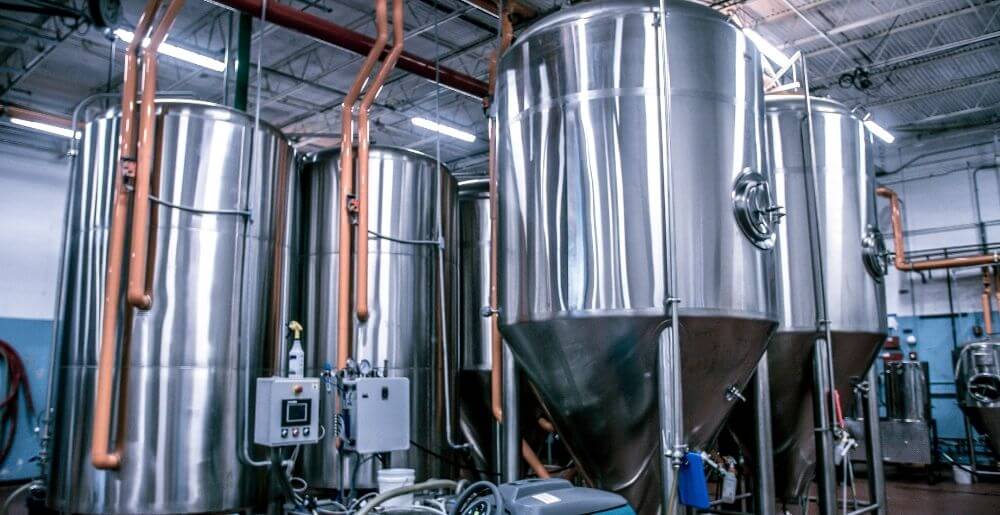If you’ve been following trending topics within the world of craft beer then you’ll likely have heard of the latest beer style to sweep through the industry: hazy IPAs.
These brews, as popular as they are unknown, were once the hidden style of just a few breweries in North Eastern America before slowly but surely taking over beer taps and bottling lines everywhere, including here in Australia.
Having now exploded in popularity, many are justifiably confused as to what they actually are and what makes a hazy IPA so popular and yet also so controversial.
In this article we’ll touch on how this style of beer came about, including its origins and history, how it's brewed, and most importantly, how it tastes and can be matched with food, to help bring you up to speed the next time you’re at a brewery or bottle shop.
Hazy IPA or New England IPA?

Let’s clear one thing right up right away: hazy IPAs and New England IPAs (NEIPAs) are referring to exactly the same style of beer.
The reason for breweries often choosing to label their beers one way or the other is purely for marketing reasons, as it’s often more understandable and appealing to the average drinker to see the term “hazy IPA” on a label or beer list than it is to see “NEIPA”.
Now that we’ve sorted out the question of what’s in a name, let’s move on to how this style of beer actually came about.
Hazy IPA: A Brief History

Almost twenty years ago, around the early 2000s, breweries in the US State of Vermont, which is located in the North Eastern corner of the country, began experimenting with the idea of crafting a style of beer that wasn’t as clear or as bitter as other styles of IPA floating around at that time.
To achieve this, they played around with using different types of yeast strains, changing up their malt bills to include malts that had naturally higher amounts of protein in them, and adding hops later in the brewing process, which emphasised hop aroma and flavour whilst imparting lesser amounts of bitterness.
Over time, consumers not only grew accustomed to the cloudiness of these brews but they actually began to prefer it as its presence in a beer often meant that the beer in front of them wasn’t going to be as bitter as most IPAs were at the time.
Since then, hazy IPAs have steadily grown in popularity into beers that are now renowned for their juicy, fruity, and noticeably hazy, or cloudy, appearance, making them a popular choice for craft beer drinkers who don’t enjoy overly-bitter brews.
How are Hazy IPAs Made?

Earlier, we touched a little on what makes hazy IPAs the way that they are, which included the use of specialty yeast strains and malt types, as well as the later addition of hops.
To elaborate on this further, let’s begin with the yeast strains.
When producing most styles of beer, particularly lagers, brewers will often use high flocculating yeast strains, which is a technical term meaning clumping or grouping together, as these strains of yeast are far more easily removed during production.
When making a hazy IPA, however, a brewer will actually prefer to use low to only moderately flocculating yeast strains instead, as they tend to result in the production of cloudier beers with a far more opaque appearance.
Beyond the yeast strains used, the malt bills of hazy IPAs also tend to be somewhat different from regular IPAs.
Not only will brewers often use malts with higher protein levels, including oat or wheat, they’ll also incorporate lactose, which is also found in milk, resulting in beers with hazier appearances, from the greater amount of remaining proteins in the liquid, and also smoother and creamier mouthfeels, popular in milkshake IPAs.
The final piece of the hazy IPA puzzle are the types of hops used and, most importantly, when they’re added during the brewing process.
In a regular IPA, brewers will add their chosen hops early on in the brewing process, which leads to beers with stronger amounts of bitterness and hop flavour.
Instead, with a hazy IPA, brewers practice what is called “dry-hopping”, which is when hops are added later in the production process and after the initial fermentation, crafting beers with significantly lower amounts of bitterness and yet strong fruity aromas and flavours.
All of these unique factors of production combine to make what is now one of the most trendy and popular styles of craft beer available today.
If you’re looking to explore deeper into how these beers are produced, be sure to check out this article here, which examines many of the above points in greater technical detail.
What do Hazy IPAs Taste Like?

Ask anyone who’s tried a hazy IPA to describe the taste in one word and they’ll probably use “juicy”.
This is actually a pretty spot on description when looking to quickly sum up what these styles of beer will taste like, with plenty of examples tasting distinctly of orange juice or various types of tropical fruits.
Beyond simple one word answers, however, you should expect to find hazy IPAs to have a medium to full bodied and creamy mouthfeel, low to only moderate amounts of bitterness, and an intense amount of fruit flavours, with common examples including orange, citrus, passionfruit, or mango.
Pairing Food with Hazy IPAs

Considering just how smooth, fruity, and juicy hazy IPAs tend to be, they are some of the best beers to pair with food.
This is particularly true when the weather is warm and you’re looking for a summer-friendly style of beer to convert someone who isn’t a fan of overly hoppy or bitter craft beers.
Some of the best food pairing options include drinking them alongside platters of fresh fruit, particularly those that are included in the flavour profile of the beer itself, juicy burgers, especially those with beef or pork patties, and finally, grilled vegetable dishes that use asparagus, peas, or artichokes alongside barbecued pieces of red meat or even heavy fish.
For more ideas on pairing food with hazy IPAs, check out this quick guide to summer food and beer pairing suggestions.